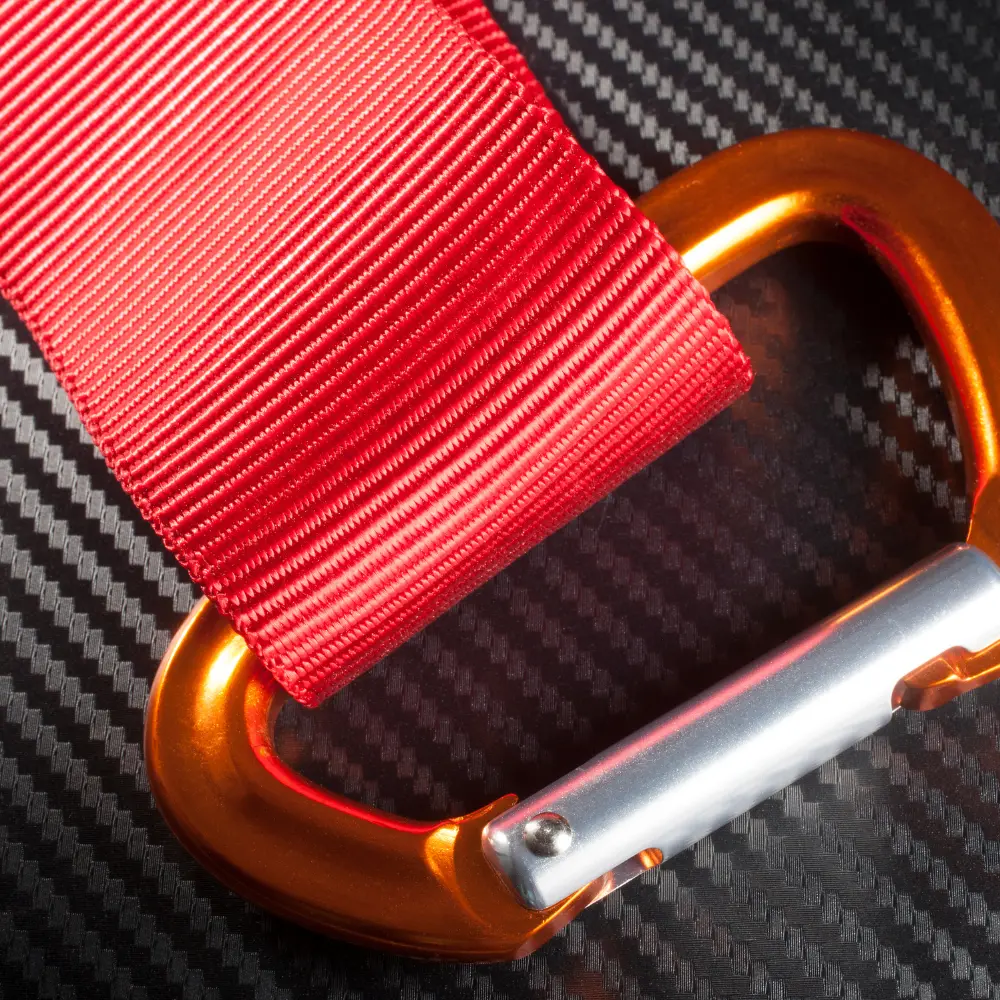- Local: (516) 346-4636
- Toll-Free: (800) 886-6060
- Fax: (516) 346-4366
- Email: kflynn@nationalwebbing.com

left nylon straps out in the rain or used them in a marine environment, you know firsthand how quickly they soak up water. While nylon webbing is strong, durable, and versatile, its relationship with moisture isn't ideal. The question of whether nylon webbing is waterproof is critical, especially for anyone relying on nylon straps for outdoor adventures, boating gear, or securing valuable equipment. Understanding how nylon behaves in wet conditions helps ensure your safety, gear performance, and overall satisfaction.
Nylon fibers naturally attract and hold moisture due to their chemical structure. Unlike certain other synthetic materials, nylon's internal structure easily allows water molecules to penetrate deeply. As a result, when nylon straps encounter rain, dew, or even just high humidity, the moisture isn't merely sitting on the surface—it's soaking into each fiber. For instance, if you've used nylon webbing to secure cargo on a truck bed overnight, you've likely noticed how much heavier and softer the straps feel after exposure to rain. This extra weight indicates water absorption within the material itself, not just on the outside.
This absorption not only makes nylon heavier, it temporarily weakens its strength and slightly increases its stretchiness—often by around 2%. This slight stretch might sound negligible until you're relying on straps to secure something critical, such as outdoor gear on a roof rack during highway travel. Straps that seemed tight enough when dry can loosen just enough when wet to cause shifting or instability.
The slow drying time of nylon webbing leads to another critical issue: mold and mildew. Anyone who's stored wet gear in a basement, trunk, or gear bag for even a few days understands the unpleasant surprise of opening that gear later to a musty smell or visible mold. Mold spores thrive on moisture and darkness, exactly what nylon webbing provides if stored improperly.
Unlike polypropylene, nylon doesn't quickly shed its moisture. The water remains locked inside the fibers, invisible but present. A nylon strap might feel dry to the touch within an hour of exposure, yet internally remain damp. This internal moisture allows mold to take root, discoloring and degrading the nylon fibers slowly over time. You might not realize this immediately, but the cumulative damage can eventually compromise strength and safety. For example, nylon straps used regularly on kayaks, canoes, or outdoor furniture that remain damp or inadequately dried often exhibit discoloration, odor, and reduced structural integrity after prolonged neglect.
Given these limitations, considering alternative materials might provide better results in wet conditions. Two popular choices, polypropylene and polyester webbing, offer distinct advantages.
Polypropylene's most significant advantage is its complete resistance to water absorption. Unlike nylon, polypropylene doesn't soak in moisture at all. This means straps made from polypropylene remain lightweight and dry rapidly, even after submersion. Polypropylene webbing also naturally floats, making it ideal for boating applications, life vests, or any gear used near open water. Additionally, its hydrophobic nature virtually eliminates mildew and mold growth.
A practical example can be seen in marine ropes or kayak tie-downs: polypropylene ropes remain buoyant and dry quickly, whereas nylon counterparts stay saturated and heavy much longer, creating inconvenience and increased maintenance demands.
Polyester webbing offers a middle-ground between nylon's strength and polypropylene's water resistance. Polyester absorbs far less water than nylon, meaning it retains strength and dries faster. It's commonly chosen for heavy-duty outdoor gear that must withstand prolonged moisture exposure without losing strength or stretching, such as ratchet straps used to secure boats or outdoor storage covers. Polyester also resists UV damage better than nylon, extending lifespan in continuous outdoor conditions.
Even with its limitations, nylon webbing remains a practical choice if you manage its moisture issues carefully. Many professional applications—from climbing harnesses to heavy-duty cargo tie-downs—continue to rely on nylon because of its unparalleled strength and durability when properly maintained.
The key to successfully using nylon in wet conditions is diligent drying and regular inspection. For example, if you're using nylon straps on camping equipment or outdoor gear, it's crucial to hang the webbing to dry immediately after use. A good rule of thumb is to store nylon straps loosely coiled or flat in a dry, well-ventilated space. Routine inspections for mold, discoloration, or persistent dampness can extend the lifespan of your nylon gear, ensuring reliable strength when you need it most.
The core truth remains: nylon webbing is not waterproof. While exceptionally strong and durable, nylon's inherent water absorption, slower drying times, and susceptibility to mold mean careful management is required when using it in wet conditions. Recognizing these limitations doesn't mean abandoning nylon entirely, but rather approaching its use with greater knowledge and preparedness.
By understanding exactly how nylon behaves when exposed to moisture, and comparing it realistically with other materials like polypropylene and polyester, you gain the clarity needed to choose the right material for each specific application. Whether securing expensive equipment, trusting your safety to harnesses and tie-downs, or simply aiming to avoid frustration from damp gear, selecting the appropriate webbing based on your expected moisture exposure ensures better outcomes.
Ultimately, while nylon webbing offers unmatched strength in dry and managed conditions, its vulnerabilities around water demand your attention and thoughtful handling.